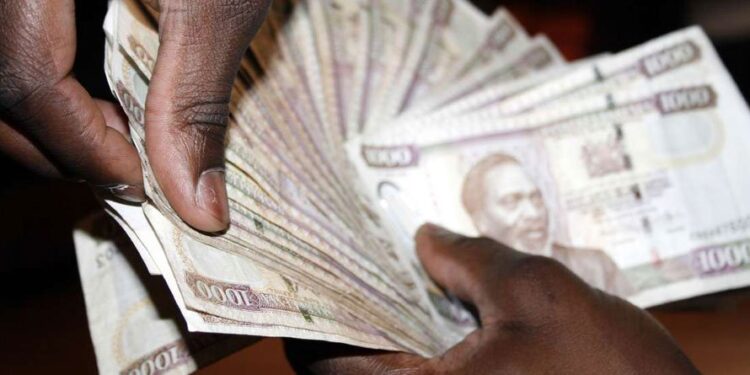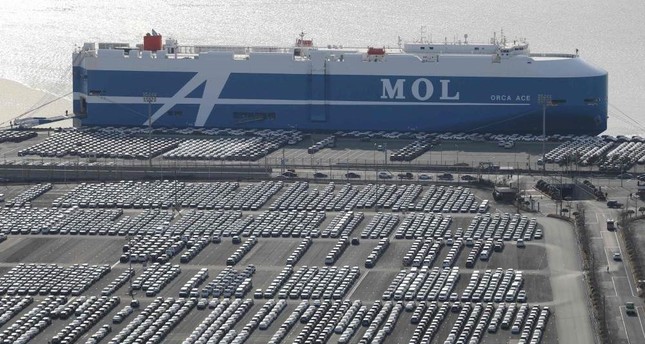News
Bad bank loans hit an all-time high Sh345bn
Wednesday, June 12, 2019 12:17
By CHARLES MWANIKI

The value of bad loans in the banking sector hit a new high of Sh345 billion at the end of March, raising questions on the health of the economy even as the lenders booked double-digit profit growth in the first three months of the year.
Banking sector data compiled from the lenders’ financial reports shows that gross non-performing loans increased by Sh27.5 billion or 8.7 percent in the first quarter of 2019.
The non-performing loans piled up even as banks reported a 22 percent year-on-year rise in first quarter net profit to Sh33.6 billion.
The rise in non-performing loans points to the difficulties businesses are facing to stay afloat in the economy, and the reduced spending power of ordinary Kenyans.
The banks have in the meantime grown their lending to government, which analysts say is helping to shield them from the negative effects of non-performing loans. They are also tapping non-interest earnings, which include fees and commissions charged on customers to boost their top line.
“The effect of the tough environment their customers are facing is, in the short-term, manifested in the rising gross NPLs and not necessarily in the top-line. However, in the long-run, if the current situation persists, we could see declines in the bank’s revenue,” said Harrison Gitau, the head of research at stockbrokerage firm Apex Africa.
A rising number of borrowers have seen their properties go under the hammer after finding it difficult to service their loans, with the most commonly auctioned sectors being real estate property and motor vehicles.
Kenya National Bureau of Statistics data shows that the economy grew by 6.3 percent last year, up from 4.9 percent in 2017. The Treasury attributed this growth to strong performance of the agriculture, manufacturing, transport and services sectors. There have been questions, however, as to how much this growth is being felt across the economy.
Lack of access to credit by the private sector, which is necessary to fuel real economic growth, has been cited as a drag on the economy.
Central Bank of Kenya data shows that credit to the private sector expanded by 4.9 percent in the 12 months to April 2019, well below the 12 to 15 percent considered optimal to fuel healthy economic growth.
The banks’ loan books grew by six percent (Sh143 billion) to Sh2.55 trillion in the 12 months to March, while their holdings of government securities rose by 12 percent or Sh164 billion to Sh1.22 trillion. Interest income from customer loans was up by just 0.7 percent to Sh72 billion, while interest earnings from government securities rose by 11.4 percent to Sh32.7 billion in the period. Non-funded income went up by an even larger margin of 13.6 percent, from Sh35.1 billion to Sh40 billion.
Banks were also able to grow their bottom-line by cutting provisioning for bad loans (by 18 percent to Sh6.1 billion), in spite of the sharp growth in their non-performing loan portfolio.
They were allowed a one-off opportunity in 2018 to move some of their provisions to capital reserves during the transition to the IFRS 9 accounting standards. The expectation was that this year they would make higher provisions thus eat into their profits, hence the view among some analysts that the quarter one cut is not likely to be sustained going forward.
“A juxtaposition of loan book growth against NPL growth, NPL coverage and the cost of risk ratio suggests that some banks may not be making sufficient provisioning thus their quarterly earnings may not be reflective of what to expect in the full year audited financials,” said the head of research at Dyer & Blair Investment Bank, Edwin Chui.
Lower yields on government securities are also pushing lenders back to customer lending, which is set to increase their exposure to risky loans.
Equity Bank said in a briefing last month that it would look to push up to Sh150 billion from its government loans portfolio of Sh169.7 billion to SME loans as these securities mature, marking a major shift in the lending strategy for Kenya’s second-largest lender by assets. CBK has on its part set up an SME loans plan dubbed Stawi, where it will offer backing to five banks to lend micro, small and medium enterprises (MSMEs) unsecured loans of between Sh30,000 and Sh250,000 through their mobile platforms.
The facility that was announced mid-last month will initially be managed by Commercial Bank of Africa (CBA), Cooperative Bank of Kenya, Diamond Trust Bank Kenya (DTB), KCB and NIC Bank.
Kenyan Business Feed is the top Kenyan Business Blog. We share news from Kenya and across the region. To contact us with any alert, please email us to [email protected]












